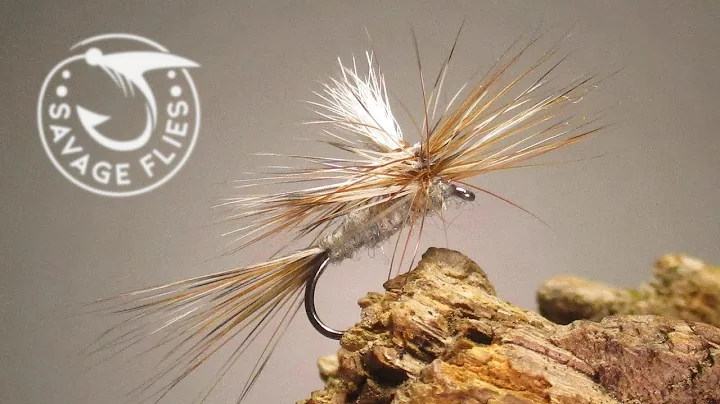Secure Your A-liner Camper with a Wind Kit
Table of Contents
- Introduction
- The Need for Wind Protection
- Gathering the Materials
- Marking and Drilling the Holes
- Measuring and Cutting the Aluminum Bars
- Installing the Bars on the Roof
- Connecting the Bars to the Walls
- Securing the Bolts and Nuts
- Final Adjustments and Testing
- Conclusion
Protecting Your A-liner from High Winds
Introduction:
Are you tired of worrying about your A-liner camper during high winds? In this article, I will guide you through the process of installing aluminum bars to provide wind protection for your A-liner. With the right materials and step-by-step instructions, you can ensure the safety of your camper even in extreme weather conditions.
The Need for Wind Protection:
Camping in unpredictable weather can be challenging, especially when it comes to strong winds. Heavy gusts of wind can cause damage to your camper, leading to costly repairs. By installing aluminum bars, you can minimize the risk of your A-liner being affected by wind-related issues. These bars act as a barrier, preventing the wind from lifting or damaging the roof and walls of your camper.
Gathering the Materials:
Before beginning the installation process, you will need to gather the necessary materials. You can find the required items at your local hardware store or order them online. The materials include:
- 2 x 96-inch long, 1-inch wide, and 1-inch thick aluminum bars
- 6 hurricane sidewalk bolts (1 inch long)
- 4 flat washers (¼ inch) made of stainless steel
- 2 wing nuts (¼ inch) made of stainless steel
- 8 nylon-inserted locking nuts (¼ inch)
Marking and Drilling the Holes:
To ensure proper installation, it is crucial to mark and drill the holes accurately. Start by marking the locations where the holes will be drilled. Measure ¾ of an inch from the corners and mark with an "X". Check the interior of your A-liner to ensure that the holes will not interfere with any weather stripping or other hardware.
Next, measure and mark the spots where the holes will be drilled on the inside of the camper. It is essential to carefully choose a location that allows for easy insertion of the bolts without hitting any internal components.
Measuring and Cutting the Aluminum Bars:
Take the aluminum bars and measure the required length. The standard length is 8 feet, but you may need to adjust it depending on the dimensions of your A-liner. Add a few extra inches to allow for a comfortable fit.
After measuring, use a cutting tool to trim the bars to the desired length. To prevent sharp edges, round off the corners by using sandpaper or a sanding block.
Installing the Bars on the Roof:
With the holes drilled and the bars cut to size, it's time to install them on the roof. Begin by positioning the bars so that they extend from one corner of the roof to the opposite corner. This will provide maximum wind protection.
Next, align the bars with the drilled holes and insert the bolts from the inside of the camper. Secure the bolts in place using caulk or silicone caulking to seal any gaps.
Connecting the Bars to the Walls:
To ensure stability, connect the ends of the aluminum bars to the walls of your A-liner. Measure from the top hole to the desired spot on the wall, considering any potential obstacles. Drill the necessary holes without interfering with the interior components.
Repeat the process on the other side of the camper. Ensure that the bars are well-aligned and parallel to each other.
Securing the Bolts and Nuts:
To complete the installation, secure the bolts and nuts in place. Start by pushing the flathead bolts through from the inside of the camper. Apply a small amount of silicone caulking around the bolts to prevent water leakage.
From the outside, add a washer, the aluminum bar, another washer, and then the locking nut. Hand-tighten the wing nut bolt, ensuring a secure connection between the aluminum bar and the wall.
Final Adjustments and Testing:
Once all the bars are secured, make any final adjustments needed for proper alignment. Check that the bars swing freely without any obstructions. Double-check the tightness of the nuts and bolts to ensure a firm hold.
To test the effectiveness of the wind protection, wait for a windy day and observe how your A-liner performs. You should notice a significant reduction in the movement of the roof and walls, indicating that the aluminum bars are successfully protecting your camper.
Conclusion:
By following these step-by-step instructions, you can install aluminum bars to protect your A-liner camper from the damaging effects of high winds. Remember to gather the necessary materials, mark and drill the holes accurately, measure and cut the aluminum bars, and securely attach the bars to the roof and walls. With this added wind protection, you can enjoy peace of mind and worry-free camping adventures.
Resources:







